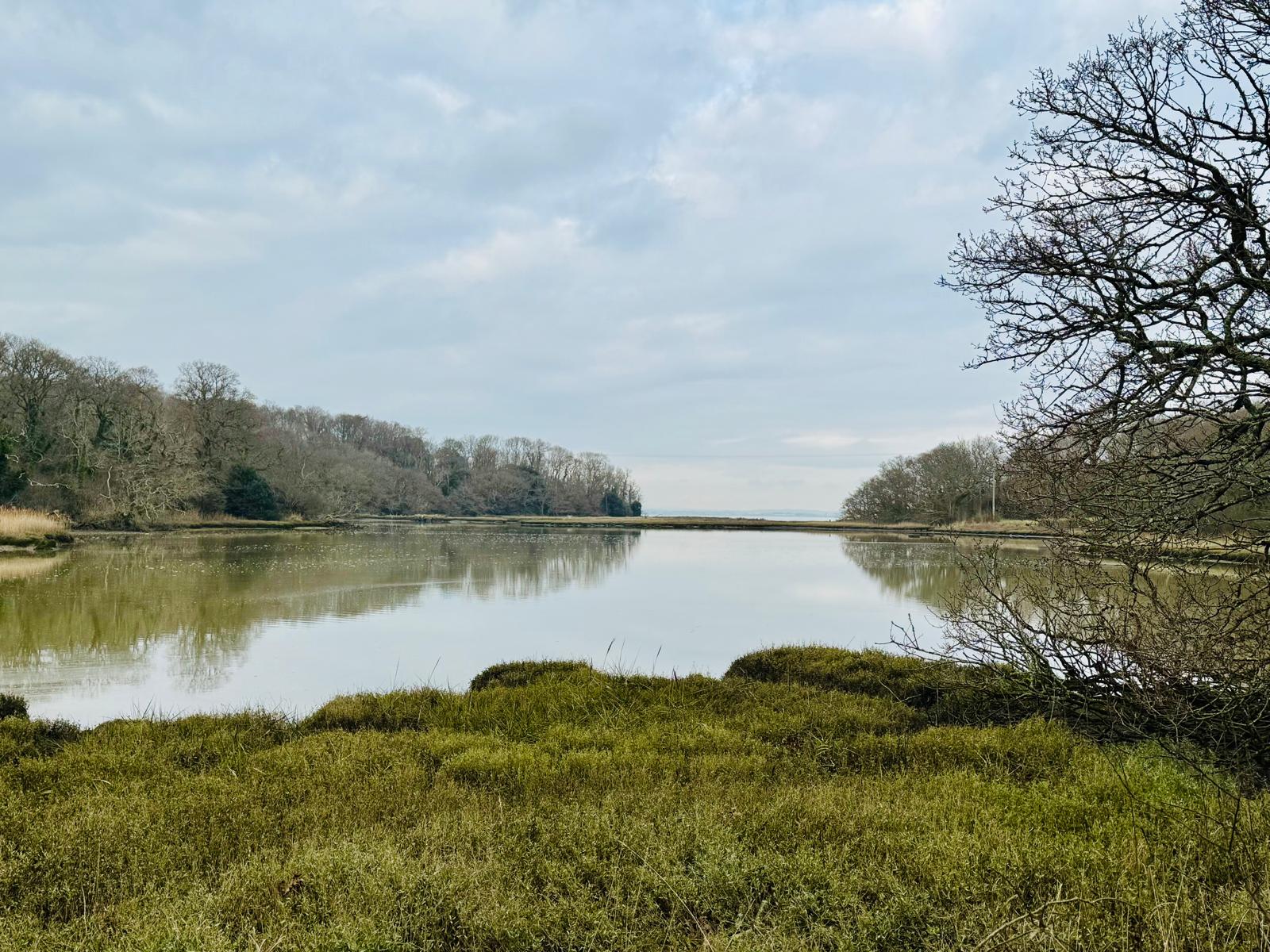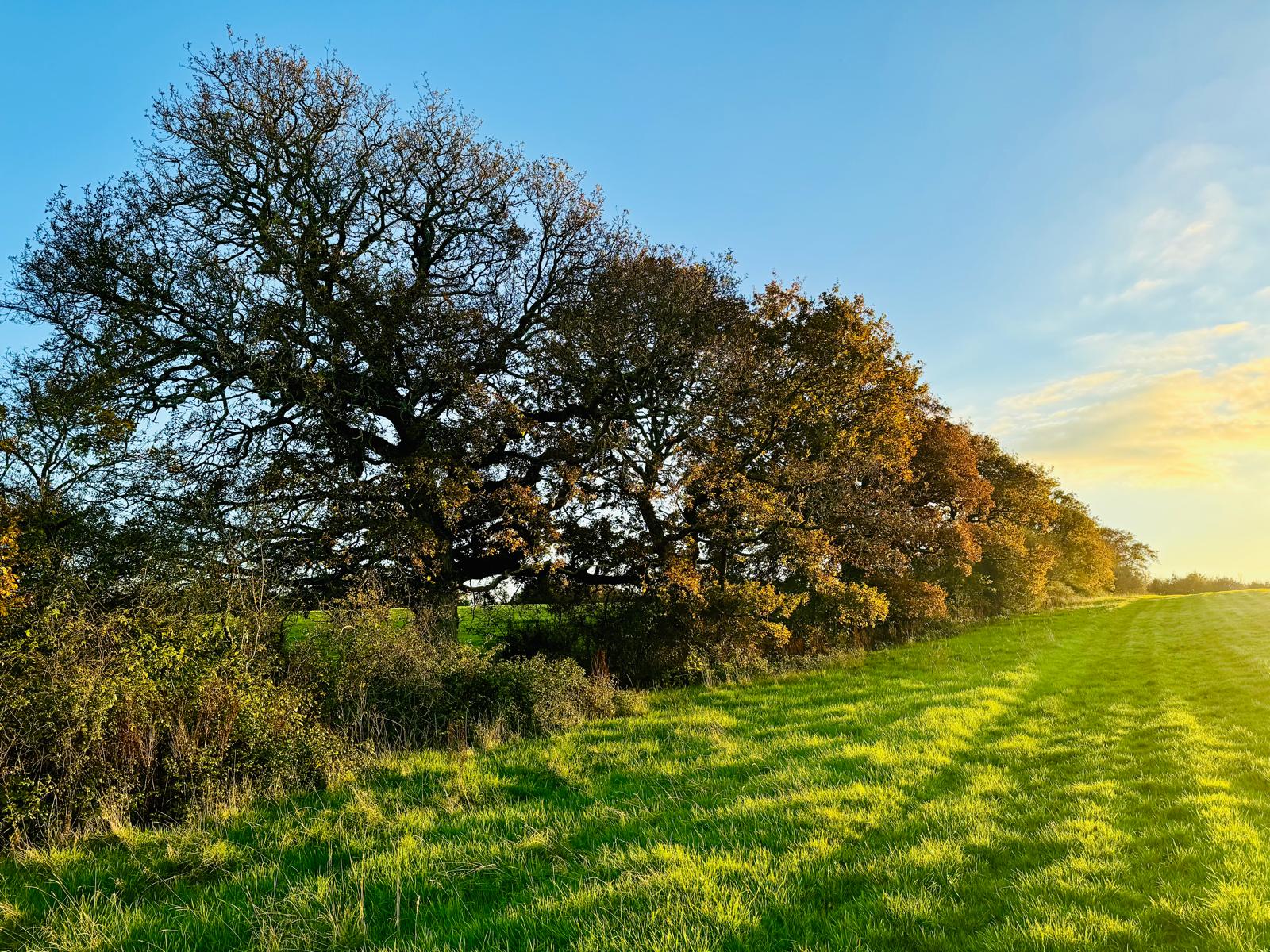The land sits midway between the villages of Fishbourne/Wootton and East Cowes on the northern coast of the Isle of Wight. It is unique in that it’s one of the very few undeveloped estuarian habitats on the island. Spanning ancient woodlands, reedbeds, salt marshes and mudflats, the site supports an array of wildlife, from migratory birds to early purple orchids.
The land is therefore highly protected and has high ecological value and biodiversity potential attracting wading birds and marine life into this unique landscape. Gently sloping towards the west, the land runs towards the picturesque Palmers Brook Nature Reserve which was recently described by the IOW Natural Landscape as "the last unspoilt inlet on The Solent".

The last unspoilt inlet on The Solent
IOW Natural Landscape
The land includes areas of ancient woodland and benefits from SSSI and RAMSAR designations. Ramsar sites are wetlands of international importance designated for their ecological significance and contribution to global biodiversity conservation.
The SSSI comprises the estuary of a stream known as Palmers Brook which flows out through Kings Quay. It is this unique mix of shoreline and ancient woodland that make this area of significant natural and scientific interest, representing a rare meeting point between two natural ecosystems.
Ecologically the site is of importance due to the huge diversity of estuarine habitats including freshwater swamps, brackish reedbeds, saltmarshes, shingle spits and intertidal mudflats. These areas provide vital feeding and breeding sites for wintering waders and waterfowl.
Most significantly, Palmers Brook Nature Reserve is of national importance due to its close proximity to the Osbourne Beds in which abundant fossil fish remains can be found.
Palmers Brook Nature Reserve totals 222 acres and includes an area which was previously being considered for gravel extraction. The Trust will embark on an ambitious restoration programme to enhance the natural capital of the land which includes numerous wild meadows brimming with wild orchid. The woodland at Palmers Brook has a rich ground flora in a variety of ancient woodland plants including butchers broom together with the narrow leaved lungwort which is common in ancient woodland on the shores of the Solent.
The woodland adjacent to the Brook is designated and scheduled as ancient semi-natural woodland being predominately oak over hazel. The remainder of the woodland is a mixed later planting over improved pasture.
The Trusts vision is to enhance the site through nature conservation, creating a more complex and diverse range of species so this unique ecosystem can thrive.



The original name for Palmers Farm and Palmers Brook dates back to 1277 when the le Paumere family owned the estate, later recorded in 1307 as Wodenbrook and Palmers Farm in 1521 in the Winchester College Manuscripts.
The Palmers estate history is intertwined with the Lisle family who it is thought owned four tenements on the west side of their Manor of Wootton. The Lisle family were seen as the most important IOW family and the only family for 300 years considered worthy to serve as High Sheriff. In 1583 John Lisle died without children at Wootton Manor the home of his brother Anthony Lisle so the land therefore passed to the Wootton Estate. The land remained in the Lisle family until 1728 when Mary Lisle widow of the Edward Lisle sold Palmers to a ‘gentleman’ from Stockbridge, Hampshire.
The land has had many custodians over the years, most notably,Palmers Brook Nature Reserve was originally part of the Barton Estate which Queen Victoria purchased in 1845 as an adjunct to Osbourne House.

It is impossible to imagine a prettier spot—valleys and woods which would be beautiful anywhere; but all this near the sea (the woods grow into the sea) is quite perfection; we have a charming beach quite to ourselves. The sea was so blue and calm that the Prince said it was like Naples. And then we can walk about anywhere by ourselves without being followed and mobbed (Esher & Benson, 1908)
Queen Victoria
A letter to Lord Melbourne in 1845
In partnership with the HIWWT the JTCT will work to restore the natural capital at Palmers Brook Nature Reserve by increasing biodiversity and protecting wildlife, so this unique piece of land becomes a haven space for nature in perpetuity.